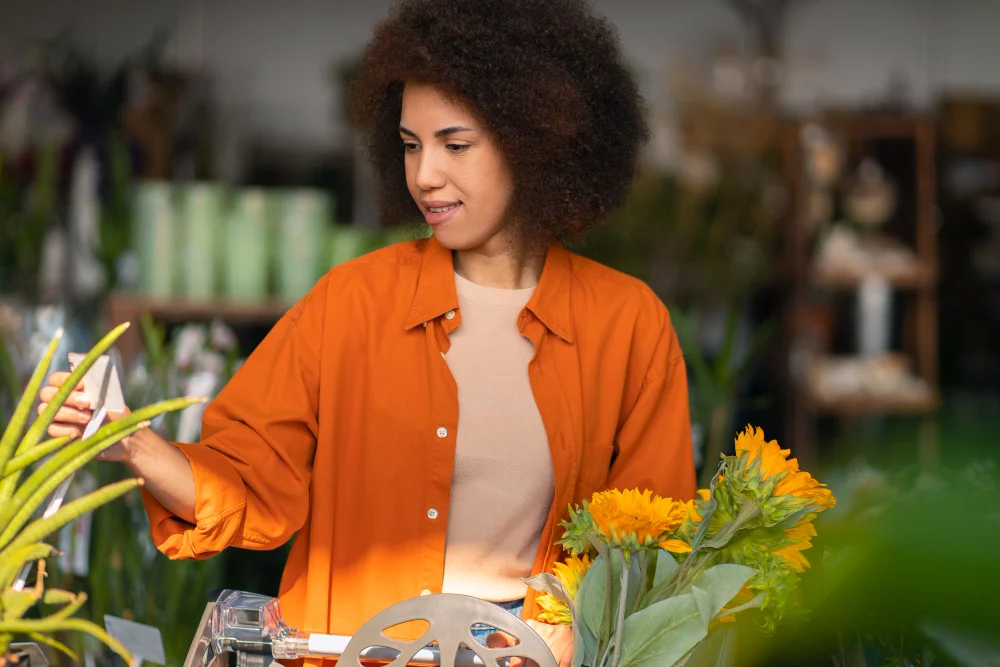Introduction
Hijabhoojup is more than just a trend in modest fashion. It represents a blend of tradition, personal expression, and global influences that shape how women choose to cover and adorn themselves. Today, many people want to understand how modest dressing can evolve to reflect both cultural heritage and modern style. This article provides a closer look at the journey of hijabhoojup, highlighting its roots, significance, styling methods, and future potential in an ever-changing fashion landscape.
Modest fashion has existed for centuries, but it continues to grow thanks to social media, global connectivity, and the desire for self-expression. In the following sections, we’ll explore how hijabhoojup fits into this broader context. You’ll discover its early origins, its symbolism, and why it matters to communities worldwide.
Historical Background
Early Origins of Modest Fashion
Modest clothing is not exclusive to one culture or religion. Throughout history, various societies embraced garments that covered the body for reasons spanning faith, climate, and social norms. In ancient civilizations, long robes and layered fabrics were common for both men and women. Over time, these garments gained symbolic meaning. They evolved into cultural identifiers, signifying status, beliefs, or group identity.
Religious practices also played a role in promoting modest attire. In many parts of the world, covering oneself was linked to spirituality and respect for sacred traditions. It became a shared thread among diverse faiths, each adding its unique interpretation to modest clothing.
The Birth of Hijabhoojup in Modern Trends
While traditional hijab has a clear definition in many Muslim-majority countries, hijabhoojup introduces a fresh perspective. It merges classic principles of covering the hair and body with contemporary fashion elements. This fusion started to appear more prominently in the early 2000s, when social media began connecting people from different cultural backgrounds. Online influencers showcased unique ways of wrapping scarves and layering outfits, which drew attention to the creativity and versatility within modest fashion.
As modest fashion shows gained popularity in places like London, Dubai, and Kuala Lumpur, designers expanded their collections to include scarves with bold prints, flowy silhouettes, and modern cuts. This shift paved the way for the concept of hijabhoojup to flourish, uniting style-conscious women who wanted garments that resonated with both faith and fashion.
Cultural Significance
Symbolism Behind Hijabhoojup
Hijabhoojup holds deep meaning for those who wear it. It symbolizes a respectful nod to religious or cultural values while celebrating individual creativity. Many women find empowerment in selecting garments and head coverings that reflect their personalities. They blend old and new in a way that reshapes how the world views modest clothing.
In some regions, wearing a headscarf is seen purely as a personal expression, while in others, it aligns strongly with long-standing traditions. Hijabhoojup bridges these interpretations. It provides a space for creative exploration, whether through intricate embroidery, statement prints, or unexpected color combinations.
Regional Variations in Style
One of the most fascinating aspects of hijabhoojup is how it adapts to different cultural contexts:
- Middle East: Traditional abayas meet contemporary trends, incorporating luxe fabrics like silk with modern cuts and embellishments.
- Southeast Asia: Vibrant batik prints or flowing kimonos pair seamlessly with hijabs, reflecting local heritage and tropical climates.
- Western Countries: Many opt for neutral tones and versatile styles that suit fast-paced urban lifestyles, often pairing hijabs with jeans, boots, or structured jackets.
These variations highlight how hijabhoojup can serve as a universal style language while maintaining a strong cultural identity.
Hijabhoojup and Modern Fashion
How Social Media Is Shaping Hijabhoojup
Platforms like Instagram, TikTok, and YouTube have transformed modest fashion by giving women the tools to share styling techniques, outfit ideas, and personal stories. Hashtags related to hijabhoojup help create online communities, allowing people from different continents to exchange ideas instantly. Influencers often showcase lookbooks that blend high-street fashion with modest elements, proving that covering up can be just as stylish and trendy as mainstream looks.
This digital exposure encourages innovation. Designers get real-time feedback from social media followers. New patterns, cuts, and draping styles emerge faster than ever. Because of this, hijabhoojup evolves continuously, reflecting the latest fashion impulses without losing its core essence of modesty.
Influencers and Designers Leading the Movement
Many prominent voices now champion hijabhoojup on global platforms:
- Designers: Modest fashion weeks feature creative professionals who push boundaries. They incorporate diverse materials, silhouettes, and even technology into their designs.
- Influencers: Bloggers, vloggers, and social media personalities showcase daily outfits, offering tutorials on scarf-tying or how to transition a casual daytime look into formal evening wear.
These figures help normalize modest style in the mainstream, breaking stereotypes and showing the world that covering up can be both fashionable and empowering.
Practical Styling Tips
Selecting the Right Fabrics
Fabric choice matters. Lightweight options like chiffon or jersey are breathable for warmer climates. Cotton or rayon can be comfortable for daily wear and easier to drape. For colder regions, thicker materials such as wool blends or even cashmere can keep you cozy without sacrificing style. Choose fabrics that offer some grip to prevent constant slipping or re-adjusting.
Accessorizing Hijabhoojup Styles
Accessories elevate an outfit. A bold statement necklace can complement a simple scarf. Pins or brooches add extra flair and secure the hijab in place. You can also experiment with headbands and hats. The key is balance: if your scarf has a vibrant print, opt for subtle accessories. If your scarf is neutral, consider adding a pop of color with a striking necklace or colorful earrings.
Styling for Different Occasions
- Casual Day Out: Pair a soft, cotton hijab with jeans and a long tunic. Finish the look with comfortable sneakers.
- Work or Office: Neutral-toned hijabs with structured blazers strike the perfect balance of professionalism and style.
- Special Events: Luxurious fabrics like silk or embroidered chiffon add elegance. Statement belts or handbags can bring everything together.
By tailoring these elements, hijabhoojup enthusiasts can easily shift from relaxed daytime attire to polished evening wear.
Empowerment and Challenges
Empowerment Through Hijabhoojup
For many women, hijabhoojup represents more than just a clothing choice. It’s a source of empowerment. When women select pieces that align with their faith, culture, and personal taste, they challenge norms that claim modest dressing is old-fashioned or restrictive. Their clothing becomes an extension of their confidence.
Social media plays a big part here too. Young girls see role models running successful businesses, strutting runways, and creating waves on social media—all while wearing hijabhoojup. This visibility fights stereotypes and encourages the next generation to explore fashion without compromising their values.
Overcoming Cultural and Societal Challenges
Despite its growing acceptance, hijabhoojup wearers still face hurdles. Misconceptions about modest clothing can lead to stereotypes. In some places, wearing a headscarf is politicized, creating barriers for women who want to enter specific fields or social spaces.
However, increasing global conversations about inclusivity and diversity offer hope. Brands that embrace modest fashion are now part of mainstream retail. Media representations are becoming more balanced. People learn that modest fashion isn’t about limitation; it’s about choice. Educating communities on the nuances of hijabhoojup is crucial to dismantling prejudice.
Sustainability in Hijabhoojup
Eco-Friendly Fabric Choices
Sustainable fashion is on the rise, and hijabhoojup is no exception. Many brands focus on natural fibers like organic cotton, bamboo, or Tencel. These materials use fewer resources and result in less environmental harm compared to traditional textiles. Recycled polyester is another option, transforming plastic waste into wearable fabrics.
Choosing eco-friendly fabrics helps reduce one’s carbon footprint and fosters responsible consumerism. It also ensures that hijabhoojup aligns with global efforts to protect the planet.
Brands Leading the Sustainable Modest Fashion Movement
Increasingly, modest fashion labels commit to ethical sourcing and fair labor practices. Some produce hijabs using local artisans, supporting community-driven economies. Others reduce packaging waste by shipping products in recycled materials.
- Halima’s Haven: Known for producing hijabs made of organic bamboo.
- EcoModesty: A brand that offsets carbon emissions and uses plastic-free packaging.
- CommunityThread: Works with local weavers to create handcrafted scarves.
When consumers support such brands, they contribute to a cycle of positive change. They show that ethical fashion can be stylish, profitable, and sustainable.
The Future of Hijabhoojup
Predicted Trends in Modest Fashion
As the fashion world seeks more inclusive designs, hijabhoojup may see continued innovation. Expect to see:
- Hybrid Styles: Scarves that incorporate wearable tech, such as UV protection or cooling fabrics.
- Bold Prints: Traditional motifs reimagined in vibrant patterns for a modern twist.
- Gender-Inclusive Concepts: Overlapping streetwear and modest fashion trends, appealing to a broader audience.
Trends will come and go, but the core idea remains the same. Hijabhoojup gives individuals a platform to blend faith, identity, and creativity.
How Hijabhoojup Is Redefining Inclusivity
Inclusivity in fashion means representing people from different backgrounds, body types, and personal styles. Hijabhoojup plays a vital role here, demonstrating that modest clothing is not a niche market. It resonates with wearers and admirers worldwide. By encouraging cross-cultural exchange, hijabhoojup helps reshape the conversation around who fashion is for. It’s not limited by location or religion.
Fashion campaigns increasingly feature women wearing hijab or other modest garments. Runway shows open to more diverse collections. This shift helps normalize hijabhoojup as part of mainstream style. It also broadens our understanding of beauty and self-expression.
Conclusion
Hijabhoojup ties together the threads of culture, faith, personal expression, and sustainability. It is a movement that embraces the past while looking firmly to the future. As more people celebrate modest fashion and acknowledge its capacity for creativity, the conversation around hijabhoojup continues to evolve. From social media platforms to high-fashion runways, this style choice leaves an indelible mark on global fashion narratives.
For anyone curious about how modest clothing can be both empowering and innovative, hijabhoojup offers endless possibilities. It invites us all to appreciate cultural diversity while exploring new styles that speak to our individuality.
FAQs
- What exactly is hijabhoojup in modest fashion?
Hijabhoojup is a modern approach to wearing the hijab. It blends cultural traditions with contemporary trends, allowing wearers to express their faith and personal style simultaneously. - How do I start experimenting with hijabhoojup?
Begin by selecting fabrics you find comfortable. Explore simple draping methods and accessorize with items like pins or brooches. Over time, you can try bolder prints or different layering techniques. - Is hijabhoojup only for Muslim women?
While its roots are in Muslim-majority communities, anyone can adopt elements of hijabhoojup if it aligns with their values. Many non-Muslims appreciate and incorporate modest styling in their wardrobes for personal or cultural reasons. - Are there sustainable hijabhoojup options?
Yes. Look for brands that use organic fabrics or ethical production methods. Supporting local artisans and using recycled materials are also ways to ensure more eco-friendly options. - What are some common misconceptions about hijabhoojup?
One misconception is that it limits self-expression. In reality, it’s a form of creative freedom that helps many women feel more confident and connected to their roots. Another misconception is that it’s outdated, whereas modern hijabhoojup often sets new trends in fashion.

